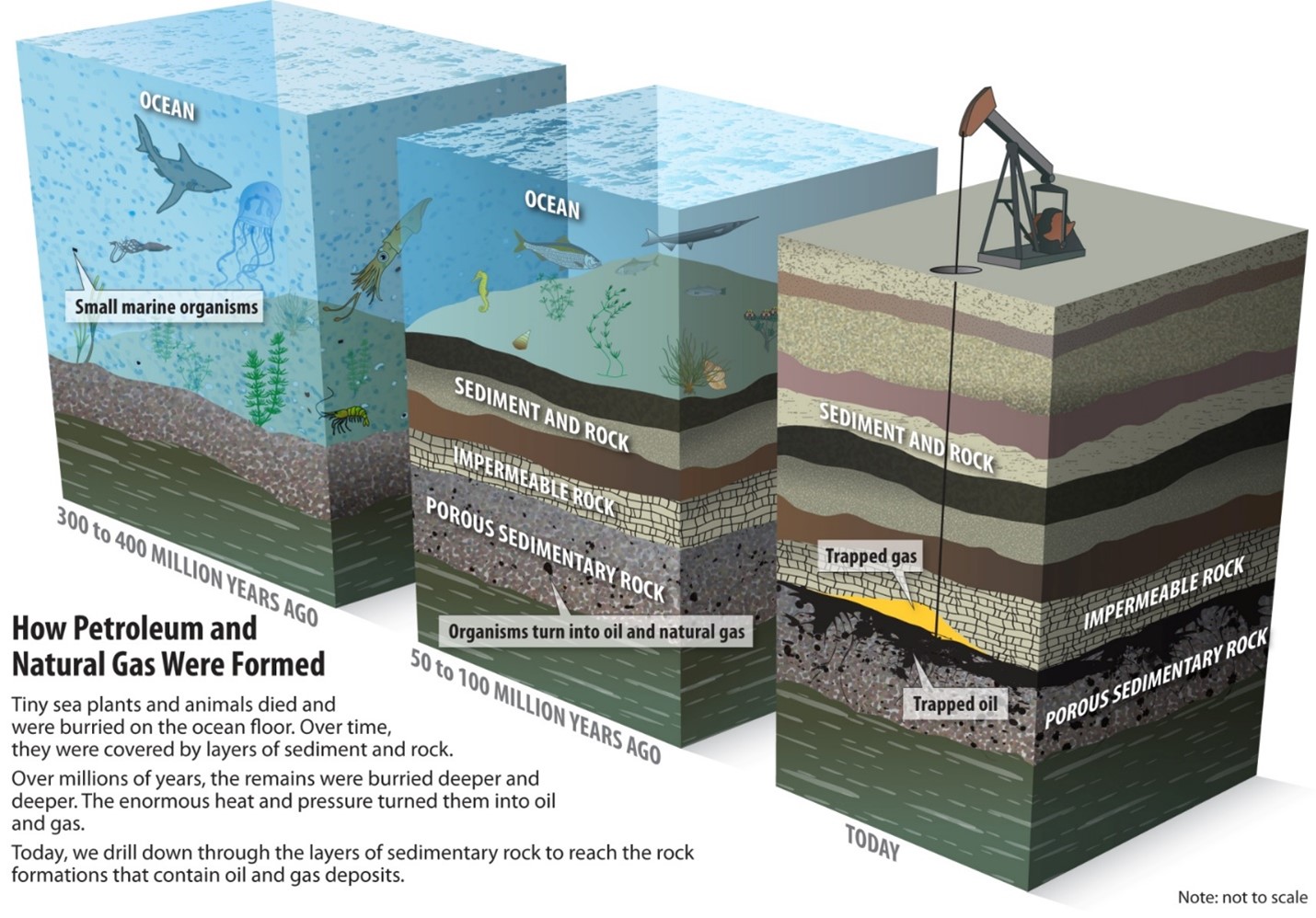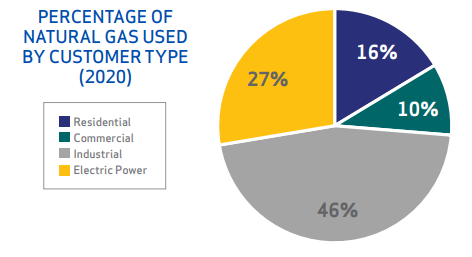
Source: The National Energy Education Development Project
Natural gas is the earth's cleanest fossil fuel and is colorless and odorless in its natural state. It is composed of four hydrocarbon atoms and one carbon atom (CH4 or methane). Once natural gas has been generated by nature, it tends to migrate within the sediments and rocks in which it was created, using the pore space, fractures, and fissures that occur naturally in the subsurface. Some natural gas can make it to the surface and shows up in seeps, while other gas molecules travel until they are trapped or impeded by impermeable layers of rock, shale, salt, or clay. These trapped deposits are the reservoirs where we find natural gas today.
Regulatory Oversight of Indiana's Natural Gas Providers
In Indiana, the Indiana Utility Regulatory Commission (IURC) regulates the rates, charges, and terms of service for intrastate pipelines and local gas distribution companies (LDCs). The Commission has full regulatory authority over 17 natural gas distribution utilities in Indiana. Of these utilities, one is a not-for-profit, one is a municipality, and 15 are investor-owned (IOUs). The following three utilities represent the largest natural gas utilities in the State of Indiana and serve 96% of the state’s natural gas customers:
- Citizens Gas
- Northern Indiana Public Service Company (NIPSCO)
- CenterPoint Energy Indiana
Indiana’s LDCs serve 3 types of customers- residential, commercial, and industrial. Based on 2020 data from the U.S. Energy Information Administration (EIA), natural gas consumption by customer type was:
- Residential: 134 million dekatherms (Dth)
- Commercial: 81 million Dth
- Industrial: 226 million Dth
Of all the natural gas consumed in the United States, Indiana ranked 10th in 2020, according to the U.S. Energy Information Administration (EIA).

Source: IURC, 2022 Annual Report
- Learn more about Natural Gas Regulations
- Learn more about Natural Gas Pipeline Safety
Natural gas can be cooled and converted into a liquid, known as liquefied natural gas (LNG), for shipping and storage. This compresses the volume of the gas, making it possible to provide transportation of natural gas by land or water where pipelines cannot go. Learn more about LNG.
About 20 percent of all the natural gas consumed during the winter is supplied by underground storage. Underground storage of natural gas is an integral component of the nation's energy system, and our nation's significant storage capacity enables utilities to offer natural gas to consumers throughout the year with reliable service.
- There are approximately 400 active storage facilities in 30 states with the capacity to store approximately 4 trillion cubic feet of natural gas for consumer use. In Indiana, Greene County has some of the largest natural geological storage caverns in the Midwest.
During the Polar Vortex, January 7, 2014, was the highest day ever for natural gas demand, when half of all natural gas consumed was delivered from the national storage system to the pipeline network.
Learn more about natural gas delivery and storage.
